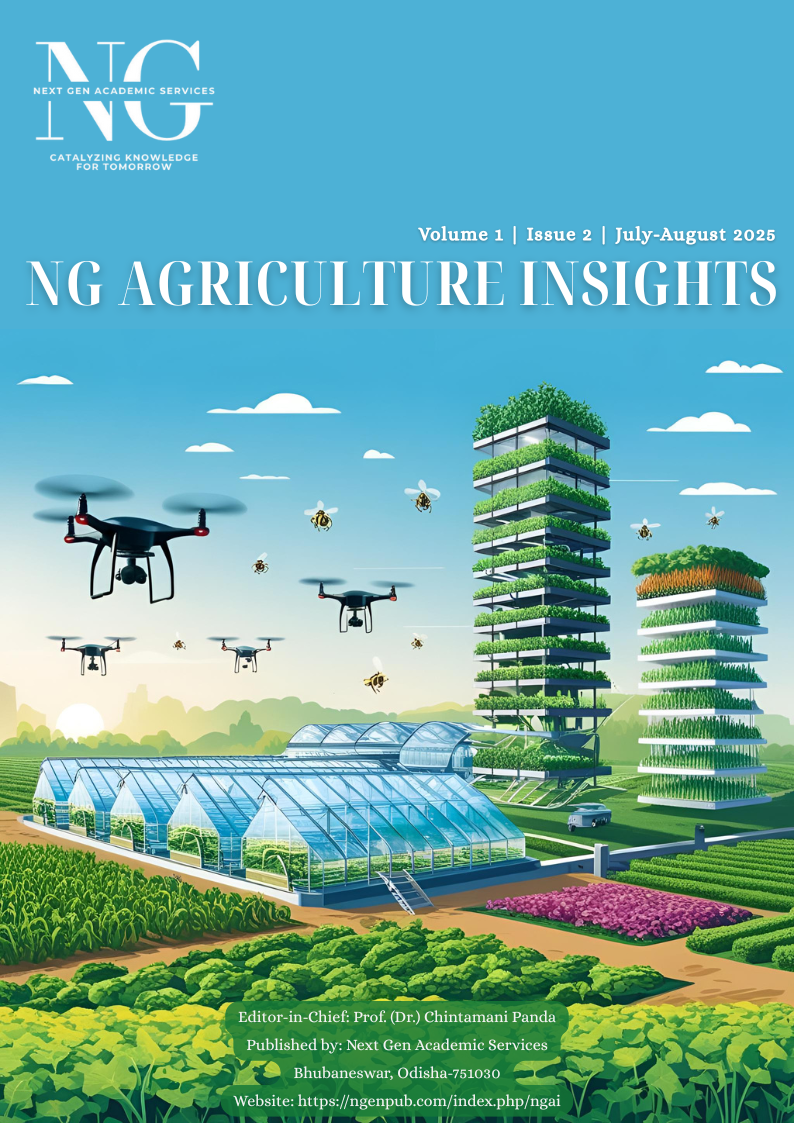Driving Growth in Indian Agriculture: The Transformative Power of Farm Mechanisation
DOI:
https://doi.org/10.5281/zenodo.15800948Keywords:
Farm Mechanisation, Productivity, Resource Optimisation, Sustainability, Technological AdvancementsAbstract
Farm mechanisation presents substantial transformative power to modernise Indian agriculture through productivity enhancement alongside resource optimisation along sustainable practice promotion. Through mechanisation farmers gain more efficient processes while the system promotes both crop diversity and gives rural youth chances to find jobs. Government initiatives, which include both subsidies and digital procurement platforms, serve as fundamental tools to enhance the availability of machinery at reduced prices. Mechanical power applications have gained substantial momentum in recent times but the sectors of harvesting and threshing require additional development. Future agricultural expansion depends on the combination of three technological progress factors, which involve precision farming and AI with IoT and eco-friendly innovations. The fulfilment of mechanisation benefits depends on solving problems pertaining to expensive equipment and fragmented pieces of land. India will reach a successful, sustainable agricultural future through the combination of holistic approaches with advanced technology and sustainability practices.
References
Bisht, I. S., Rana, J. C., Yadav, R., & Ahlawat, S. P. (2020). Mainstreaming agricultural biodiversity in traditional production landscapes for sustainable development: The Indian scenario. Sustainability, 12(24), 10690. https://doi.org/10.3390/su122410690
Gupta, S. K., Sahoo, S., Sahoo, B. B., Srivastava, P. K., Pateriya, B., & Santosh, D. T. (2024). Prediction of groundwater level changes based on machine learning technique in highly groundwater irrigated alluvial aquifers of south-central Punjab, India. Physics and Chemistry of the Earth, Parts A/B/C, 135, 103603. https://doi.org/10.1016/j.pce.2024.103603
Mehta, C. R., Chandel, N. S., Jena, P. C., & Jha, A. (2019). Indian agriculture counting on farm mechanization. Agricultural Mechanization in Asia, Africa and Latin America, 50(1), 84-89.
Mehta, C., Chandel, N., & Senthilkumar, T. (2014). Status, challenges and strategies for farm mechanization in India. Agricultural Mechanization in Asia, Africa and Latin America, 45(4), 43-50.
Mohapatra, R. (2016). Dynamics of Agricultural Mechanisation and Rural Labour Force. Asian Journal of Research in Social Sciences and Humanities, 6(1), 26-40.
Patel, S. K., Sharma, A., & Singh, G. S. (2020). Traditional agricultural practices in India: an approach for environmental sustainability and food security. Energy, Ecology and Environment, 5(4), 253-271. https://doi.org/10.1007/s40974-020-00158-2
Ravikishore, M., Supriya, P., & Subbaiah, S. K. R. (2022). Farm Mechanisation: Policies, Challenges and Strategies. The Agriculture Magazine, 2(1), 118-126.
Singh, G. (2015). Agricultural mechanisation development in India. Indian journal of agricultural economics, 70(1), 64-82.
Singh, S., & Singh, S. (2021). Farm power availability and its perspective in Indian agriculture. RASSA Journal of Science for Society, 3(2), 114-126.
Downloads
Published
Issue
Section
License
Copyright (c) 2025 Sharmistha Sahu, Bhabani Shankar Dash, Bibhuti Bhusan Sahoo

This work is licensed under a Creative Commons Attribution 4.0 International License.





